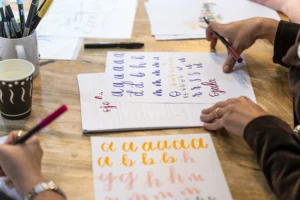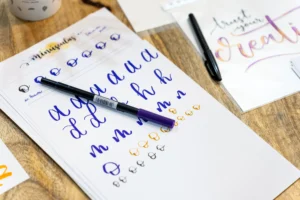
In the world of typography, handwritten fonts hold a special place. They evoke a sense of personality, authenticity, and creativity that is often missing in more structured, digital typefaces. From elegant calligraphy to playful scribbles, unique handwritten fonts have become a powerful tool for designers, marketers, and artists alike. This article explores the fascinating world of handwritten fonts, their history, styles, applications, and how they can elevate your creative projects.
Handwritten fonts have a rich history that dates back to the earliest forms of written communication. From ancient manuscripts to modern digital designs, the evolution of handwritten fonts reflects changes in culture, technology, and artistic expression.
The origins of handwritten fonts can be traced back to ancient civilizations. Scribes in Egypt, Mesopotamia, and China developed unique writing styles that were deeply tied to their cultural and religious practices. For example:
During the Renaissance, handwritten fonts took on a new level of sophistication. The invention of the printing press by Johannes Gutenberg in the 15th century revolutionized typography, but handwritten scripts remained popular for personal correspondence and artistic works. Calligraphers like Ludovico degli Arrighi developed elegant scripts that influenced modern handwriting styles.
With the advent of computers and design software, handwritten fonts have transitioned from physical to digital formats. Today, designers can create and share unique handwritten fonts that mimic the nuances of real handwriting, making them accessible to a global audience.
Handwritten fonts are more than just a design trend—they are a powerful way to convey emotion, authenticity, and individuality. Here’s why they matter:
Handwritten fonts come in a variety of styles, each with its own unique characteristics. Below are some of the most popular types:
Calligraphy fonts are characterized by their elegant, flowing strokes. They are often used for formal occasions like weddings, certificates, and luxury branding.
Brush fonts mimic the look of hand-painted brush strokes. They are popular in modern designs, especially for posters, logos, and social media graphics.
These fonts have a relaxed, informal feel, making them perfect for everyday use. They are often used in blogs, journals, and personal projects.
Grunge fonts have a rough, edgy appearance, often with uneven lines and textures. They are ideal for designs that aim to convey a rebellious or vintage vibe.

Selecting the perfect handwritten font for your project can be challenging. Here are some tips to help you make the right choice:

Handwritten fonts are incredibly versatile and can be used in a variety of creative projects. Here are some common applications:
Many brands use handwritten fonts to create a friendly, approachable image. For example, Coca-Cola’s iconic logo features a custom handwritten script.
Handwritten fonts are perfect for creating eye-catching social media posts that stand out in a crowded feed.
Elegant calligraphy fonts are a popular choice for wedding invitations, adding a touch of sophistication to the design.
Handwritten fonts can make product packaging feel more personal and artisanal, appealing to consumers who value authenticity.

If you’re looking for a truly unique touch, consider creating your own handwritten font. Here’s how:
Unique handwritten fonts are a powerful tool for adding personality and authenticity to your designs. Whether you’re crafting a brand identity, designing a wedding invitation, or creating social media graphics, handwritten fonts offer endless possibilities for creativity. By understanding their history, styles, and applications, you can make informed choices that elevate your projects and leave a lasting impression.
In a world dominated by digital perfection, handwritten fonts remind us of the beauty of imperfection and the value of human touch. So, the next time you’re working on a design, consider incorporating a unique handwritten font—it might just be the perfect finishing touch.
Q: Can handwritten fonts be used in professional settings?
A: Absolutely! Handwritten fonts can add a personal touch to professional documents like presentations, reports, and business cards, as long as they are legible and appropriate for the context.
Q: Are handwritten fonts free to use?
A: Some handwritten fonts are free for personal use, but others may require a license for commercial projects. Always check the font’s licensing terms before use.
Q: How do I pair handwritten fonts with other typefaces?
A: Pair handwritten fonts with simple, clean typefaces to avoid overwhelming your design. For example, combine a bold handwritten font with a sans-serif font for balance.